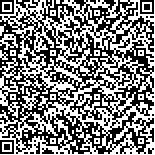下载中心
优秀审稿专家
优秀论文
相关链接
摘要

利用美国国家浮标数据中心NDBC和热带大气海洋计划TAO浮标的海表面温度数据,对WindSat 2004年-2013年近10年的海表面温度产品进行了验证。结果表明,在美国沿岸海域,WindSat反演得到的海表面温度的平均偏差为0.10℃,标准偏差为0.59℃;在近赤道太平洋海域,反演得到的海表面温度的平均偏差为-0.15℃,标准偏差为0.33℃。WindSat海表面温度在夏季相对浮标实测值有正偏差增大和负偏差缩小的趋势,在美国东海岸以及墨西哥湾区域部分站点反演得到的海表面温度的标准偏差较大,其标准偏差超过1℃。在5-10 m/s风速段,WindSat海表面温度反演效果比较理想,平均偏差和标准偏差相对恒定。当风速大于12 m/s时,WindSat海表面温度反演的不确定性明显增加。与AMSR-E月平均海表面温度产品对比发现,夏季,WindSat SST较AMSR-E偏低;冬季,WindSat SST较AMSR-E偏高。
Sea Surface Temperature(SST) is one of the important parameters of hydrodynamic and oceanographic research. It has been widely utilized in the study of climate change, weather forecasting, numerical weather prediction(NWP), atmospheric and oceanographic applications, fisheries, and other sciences. This study comparesSST derived from WindSat to those directly observed by NDBC/TAO buoy and SST provided by AMSR-E. In the collocation of WindSat and buoy data, an SST value with a rain rate larger than zero was rejected. Collocation adopted a ±30 min time constraint and 25 km maximum separation. A total of 82, 247 WindSat-NDBC collocations and 366, 693 WindSat-TAO collocations were acquired. Rsults show that WindSat SST has a mean bias of 0.10℃ and standard deviation of 0.59℃ in the coastal and offshore waters of the United States. In the tropical Pacific Ocean, WindSat SST has a mean bias of -0.15℃ and standard deviation of 0.33℃. In addition, WindSat SST has an increasing warm bias or a decreasing cool bias in summer. The standard deviations of the satellite-derived SST are both relatively large in the US East Coast and in the Gulf of Mexico; the standard deviations of certain regions are higher than 1℃. When the buoy wind speed ranges from 5 m/s to 10 m/s, the accuracy of WindSat SST is good, and the mean bias and standard deviation are relatively constant. When the buoy wind speed exceeds 12m/s, the uncertainty of WindSat SST increases. Global comparison with AMSR-E shows that WindSat monthly averaged SST is cooler than that of AMSR-Ein summer and warmer in winter. Even though it has operated beyond its designed life of seven years, WindSat SST continues to exhibit acceptable accuracy. WindSat retrieves SST better in tropical Pacific and worse in US coasts and in the Gulf of Mexico. The part of wind direction correction in retrieval algorithms needs to be improved to increase the accuracy of SST retrieval under conditions of high wind speed.

